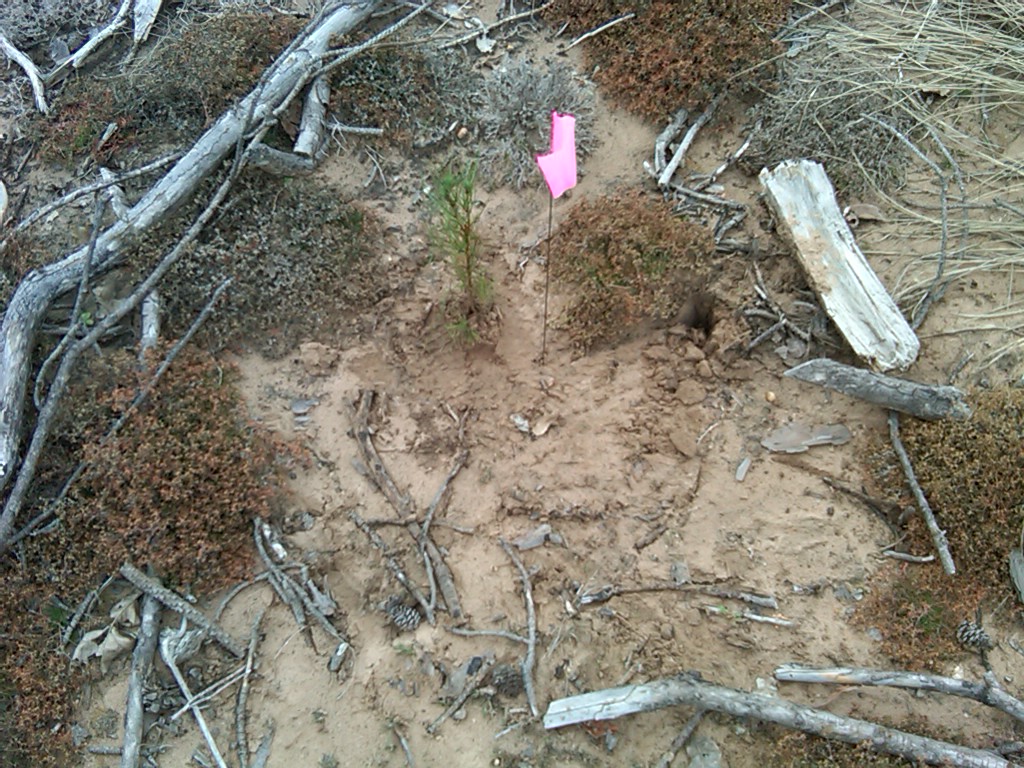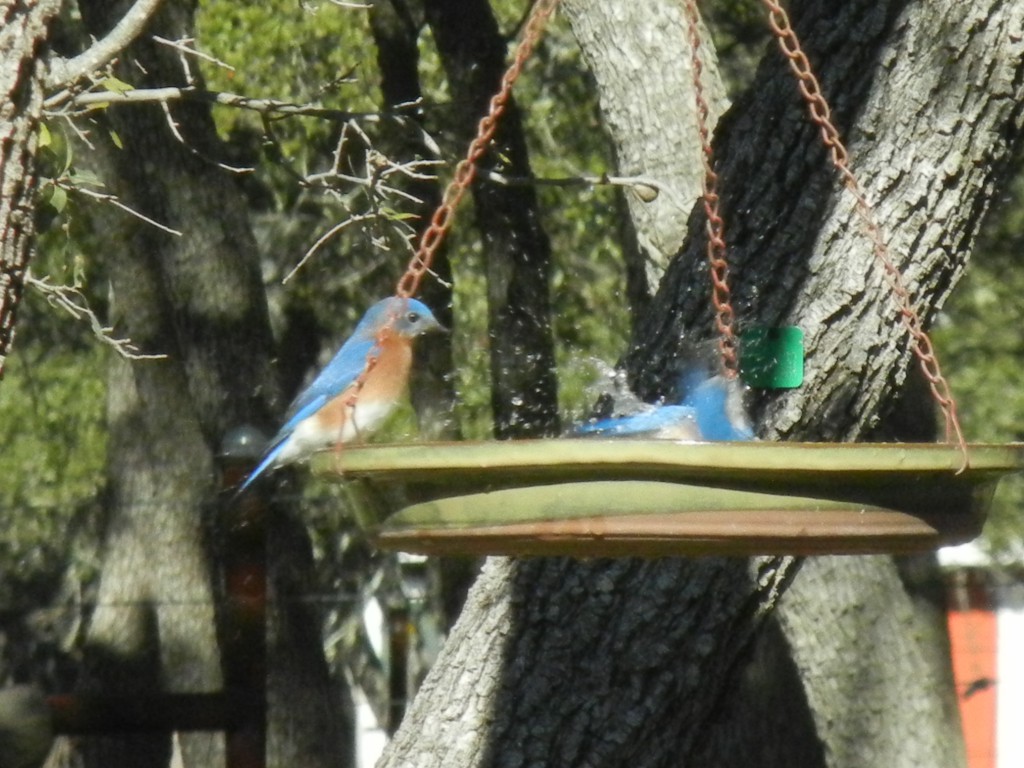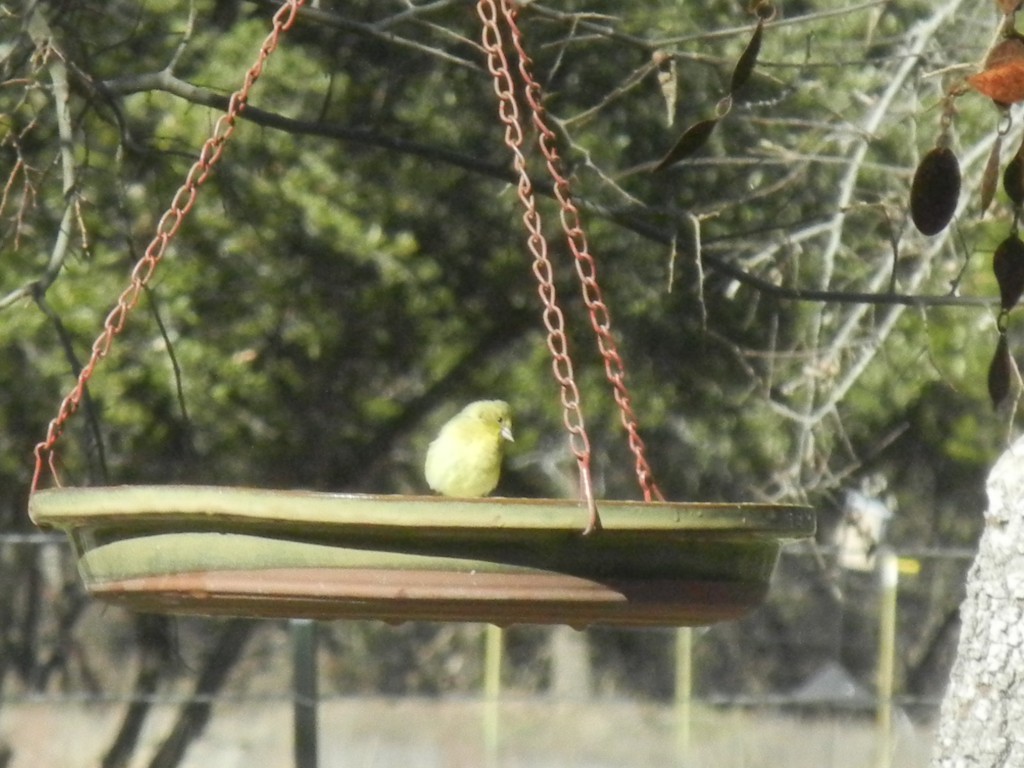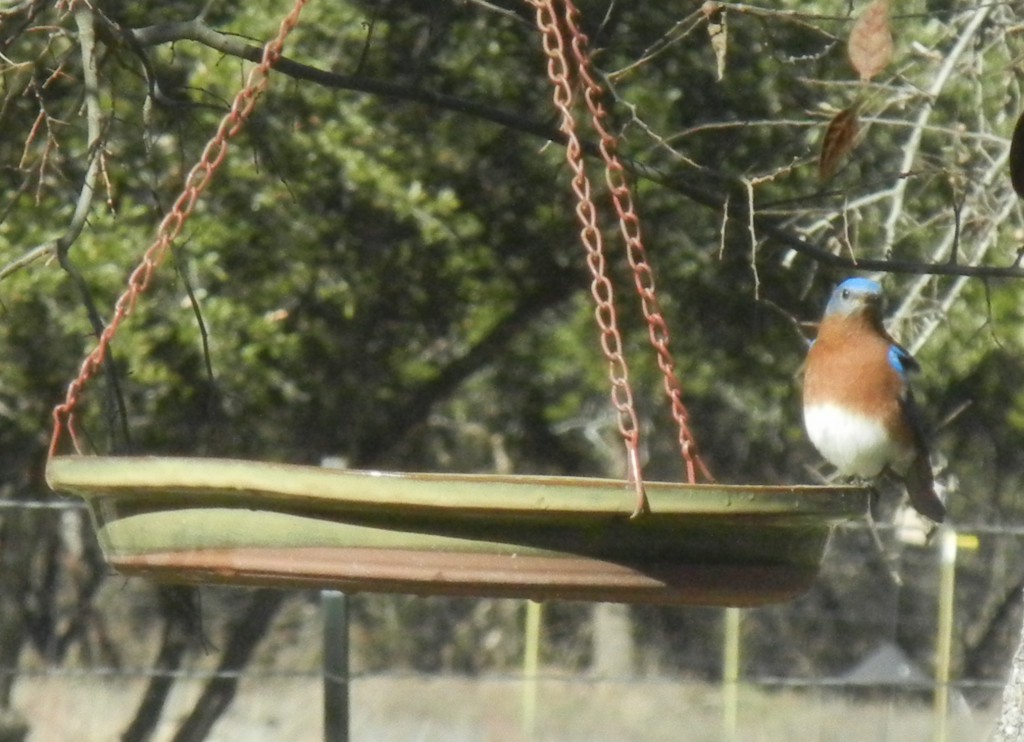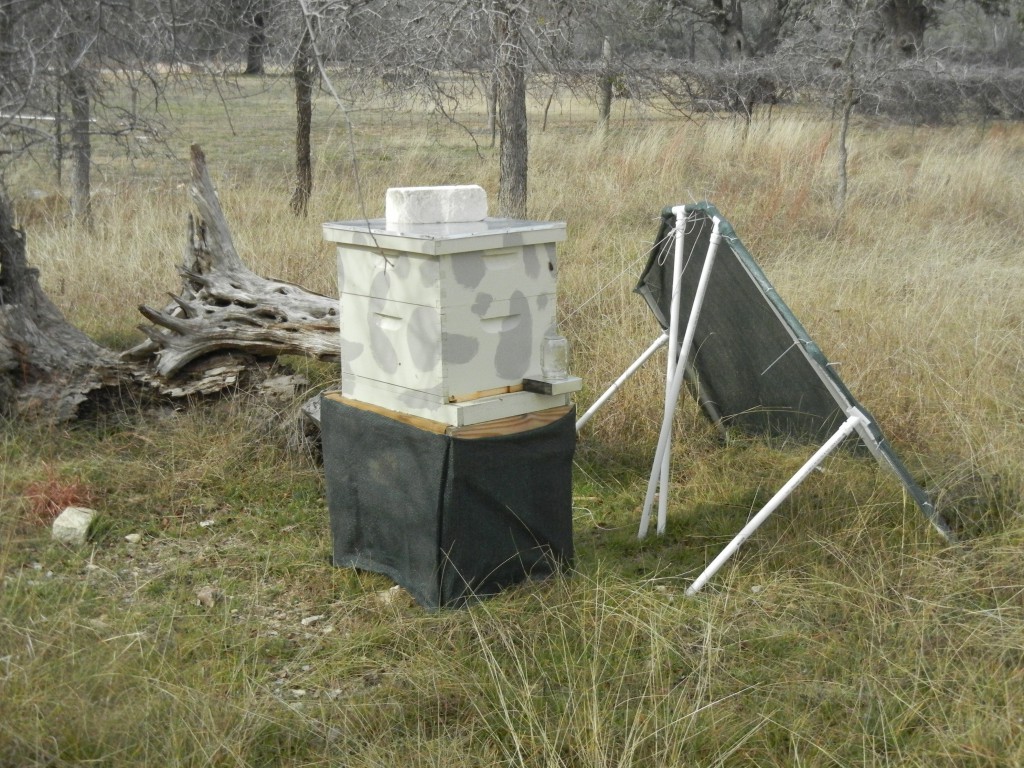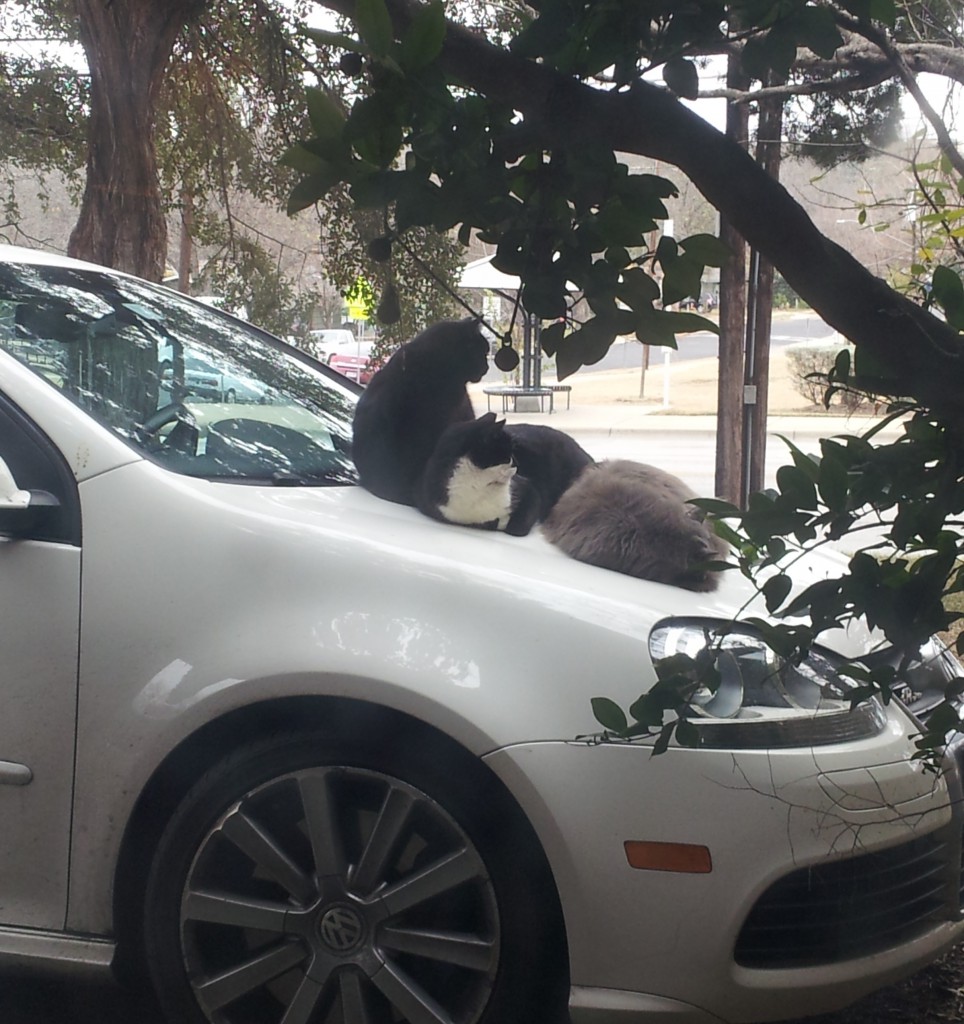The back of my 4 and half acre property is still unused at this time. Its where I keep my bees, but beyond that I have not yet decided what to do with it.
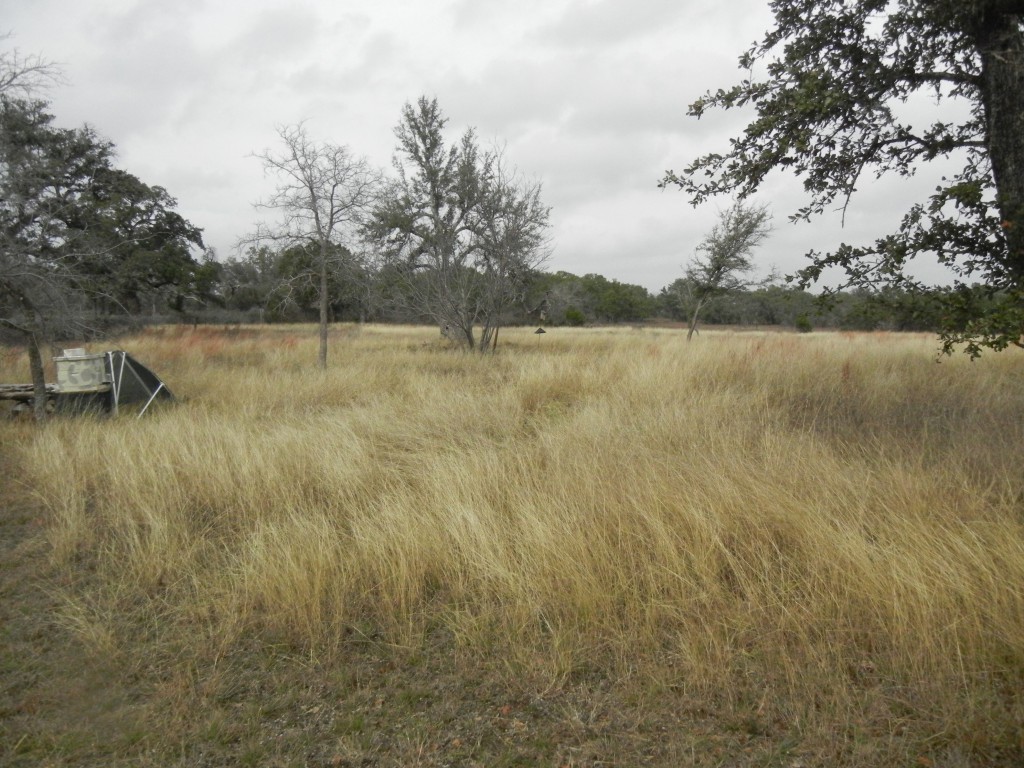
My beehive all tucked up for the winter with a wind break installed on the north side of it. Bees were actively hunting for nectar that day since it was so warm.
The previous owners had cut down all trees besides some Live Oaks (which promptly got Oak wilt -grrrrr) and had regularly mowed the grass down to the rocks so that it looked more like a moonscape when I bought the property than a grassy field. After taking the Master Naturalist course which included several classes on land restoration, I decided to leave it be and see what plants, grasses and wildlife would show up. Since late 2010 I have only mowed the entire field once and then let it do it’s thing.
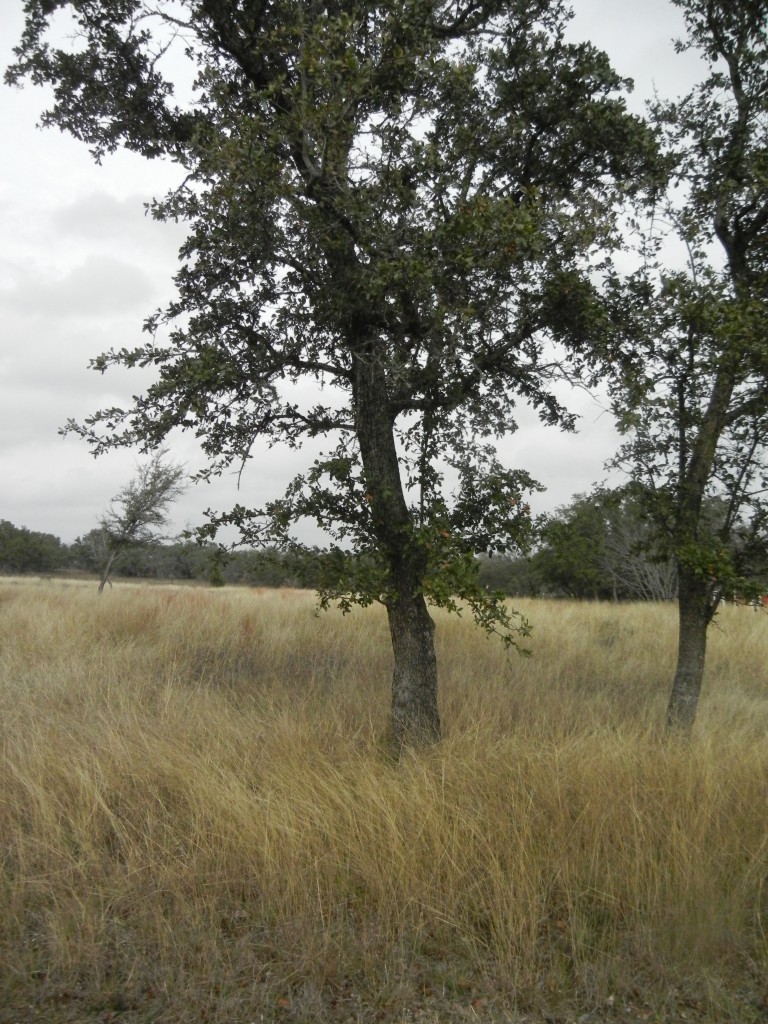
My back field on a cloudy and humid Saturday 1/12/13 – un-mowed. You can see all the grass stalks for their summer seed heads.
The first thing I noticed in spring of 2012 (we won’t count 2011 because the severe drought left the field a brown dirt patch) was the amount of wildflowers that showed up. And with it the butterflies and native bees. The grasses started growing and throughout the summer I saw several different types of grasshoppers, Syrphid flies, butterflies and lizards scoping out the area. It became a welcoming place for many different species.
In mid summer I decided to mow one patch near the fence to see what a difference in wildlife occupancy it would make and come to find out it was a LOT. Even in winter. In the picture below you can see the mowed strip and while walking there I could not see any wildlife hanging around. I have also found that the long grass blades protects the underlying root systems of plants from the freezing nights we have been getting.
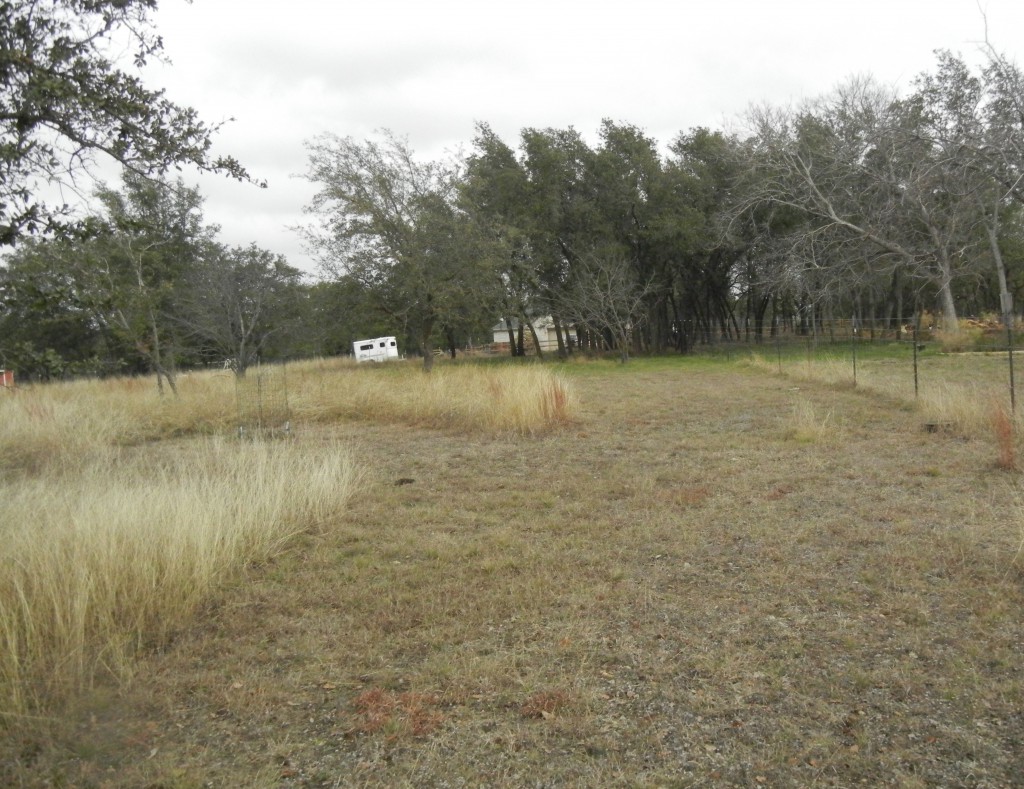
Mowed section of the field.
In early fall, all the grasses had finished seeding out and the local bird population had filled their bellies with seeds and bugs. Most of the wildflowers had faded so that the butterflies had moved on. I started debating on when to mow the field. It has some invasive KR Bluestem grass on it, but more native grasses were growing too. Right now it looks like a yellow field of slender yellow sticks. On the one hand, I don’t want to mow the field down at this time because on a quick walk around the field last week I found small butterflies, grasshoppers and all kinds of bugs still living in the shelter of the grasses.
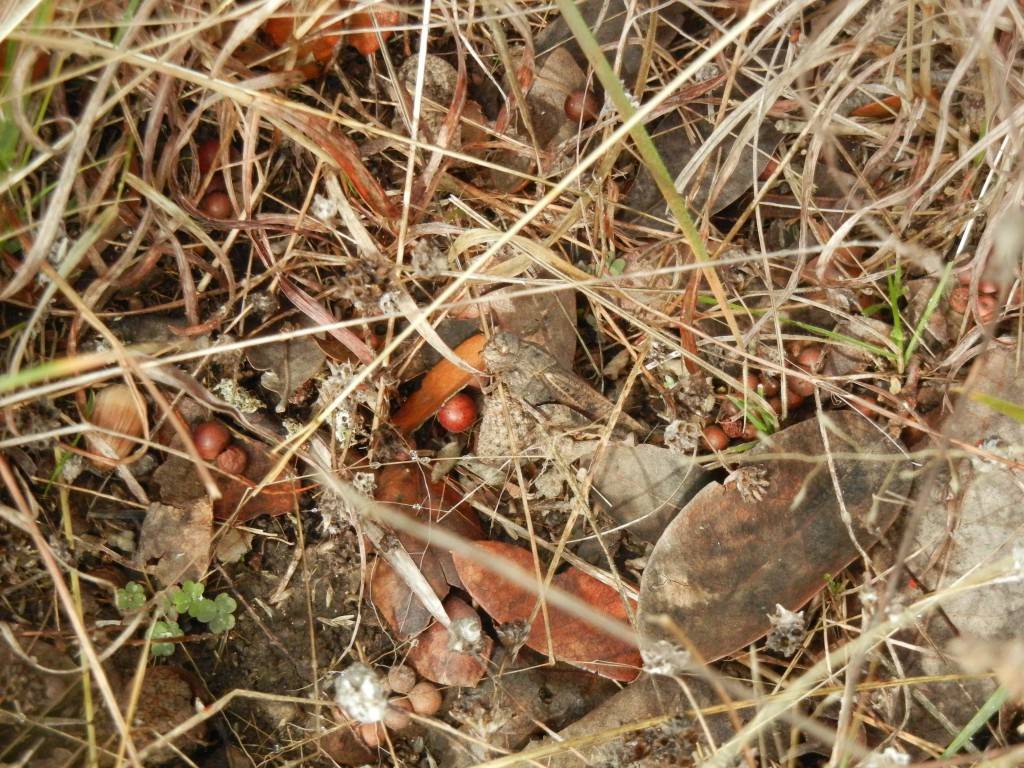
Can you see the grasshopper? This un-mowed field is still providing shelter for wildlife.
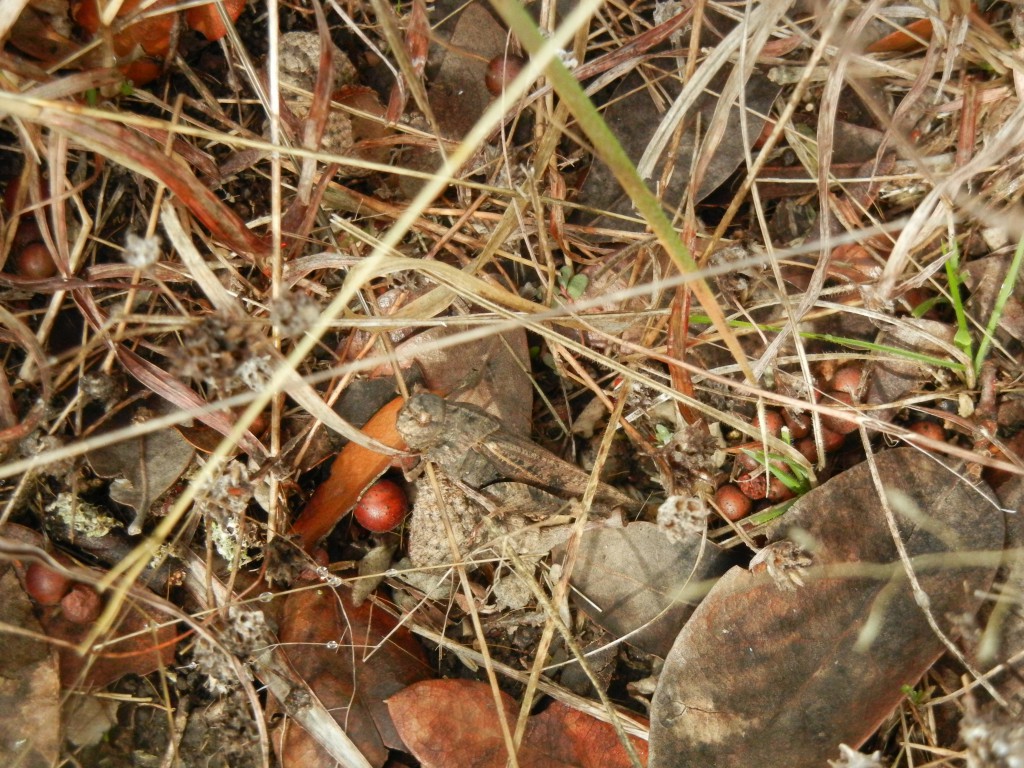
See him now? Excellent camouflage.
On the other hand though, dry tall grasses in a field can be very good kindling for a wildfire! So the debate continues. Fortunately we’ve had a very wet January so far with several inches of rain having fallen. Everything is still very damp. I think I will leave the field alone until it either gets too dry and becomes a hazard, or mow it in late winter just before the new grass blades and wildflowers start budding out.
At some point I will clear some of the more invasive grasses from an area in the field and spread out wildflower and native grass seed mix. I guess I had better get to shopping! 😀
 So armed with hardhats, sacks of tree saplings and a steel pole we were sent on our way to designated areas that were the most affected. Areas where the fire had burned so hot that even the pine seeds were sterilized.
So armed with hardhats, sacks of tree saplings and a steel pole we were sent on our way to designated areas that were the most affected. Areas where the fire had burned so hot that even the pine seeds were sterilized.

